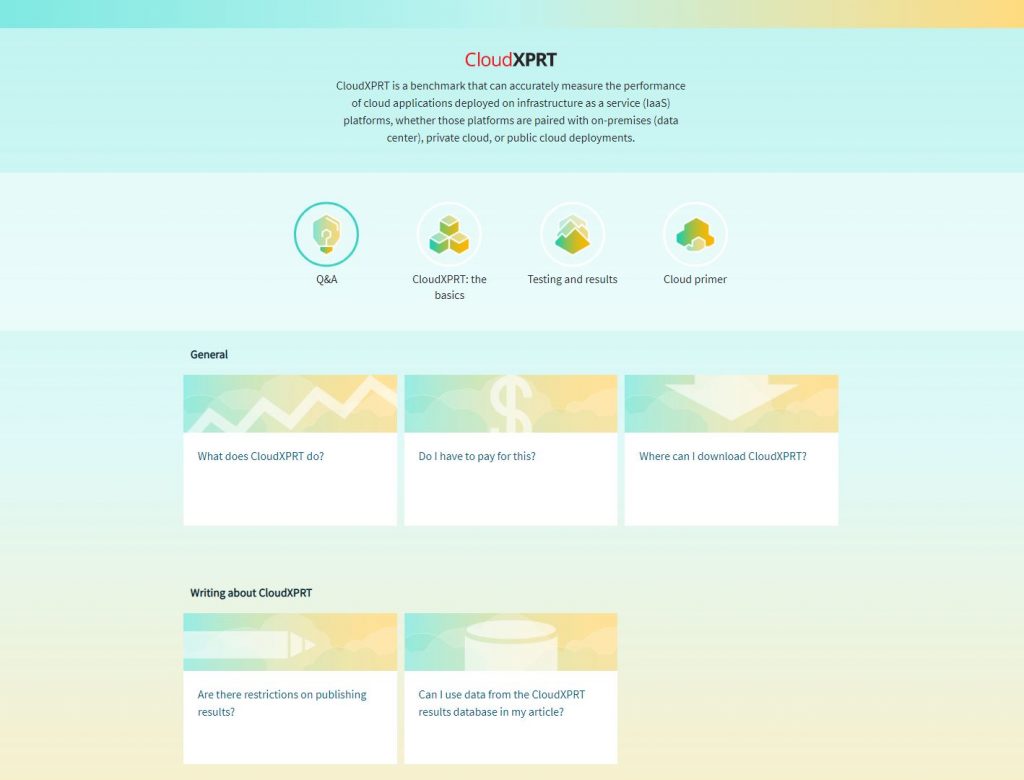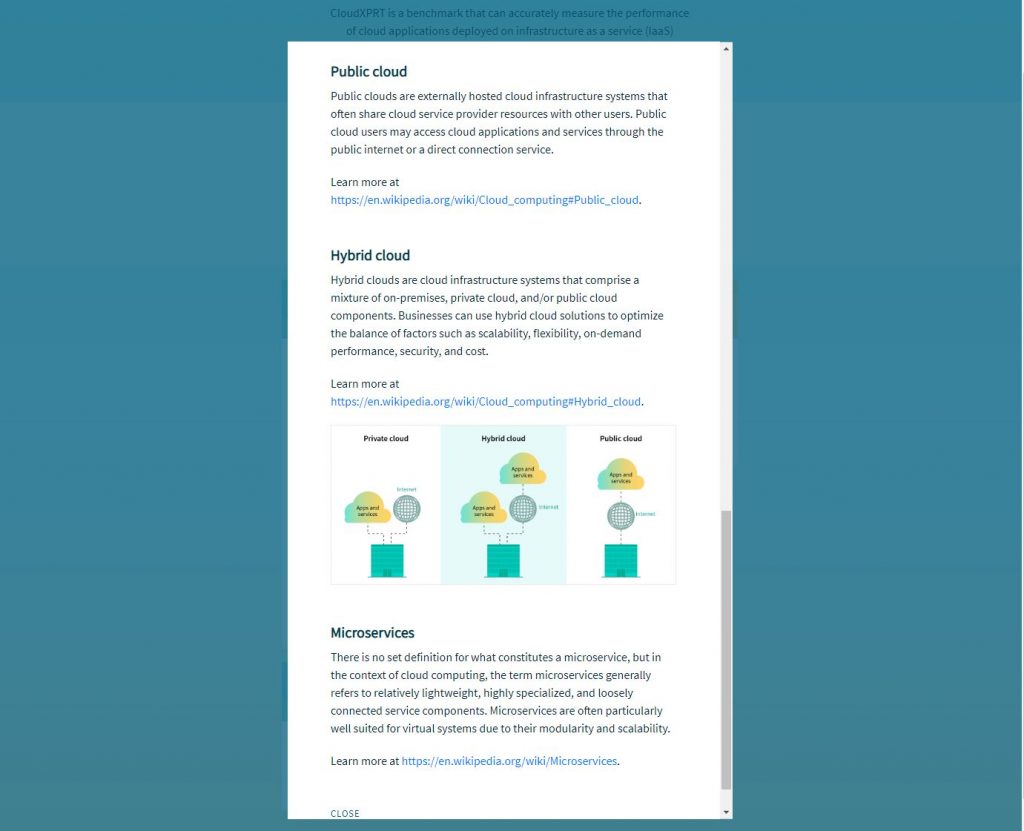We’re happy to announce that CloudXPRT v1.1 will move from beta to general release status tomorrow! The installation packages will be available at the CloudXPRT.com download page and the BenchmarkXPRT GitHub repository. You will find more details about the v1.1 updates in a previous blog post, but the most prominent changes are the consolidation of the five previous installation packages into two packages (one per workload) and added support for Ubuntu 20.04.2 with on-premises testing.
Before you get started with v1.1, please note the following updated system requirements:
- Ubuntu 20.04.2 or later for on-premises testing
- Ubuntu 18.04 and 20.04.2 or later for CSP (AWS/Azure/GCP) testing
CloudXPRT is designed to run on high-end servers. Physical nodes or VMs under test must meet the following minimum specifications:
- 16 logical or virtual CPUs
- 8 GB of RAM
- 10 GB of available disk space (50 GB for the data analytics workload)
We have also made significant adjustments to the installation and test configuration instructions in the readmes for both workloads, so please revisit these documents even if you’re familiar with previous test processes.
As we noted during the beta period, we have not observed any significant differences in performance between v1.01 and v1.1, but we haven’t tested every possible test configuration across every platform. If you observe different results when testing the same configuration with v1.01 and v1.1, please send us the details so we can investigate.
If you have any questions about CloudXPRT v1.1, please let us know!
Justin














